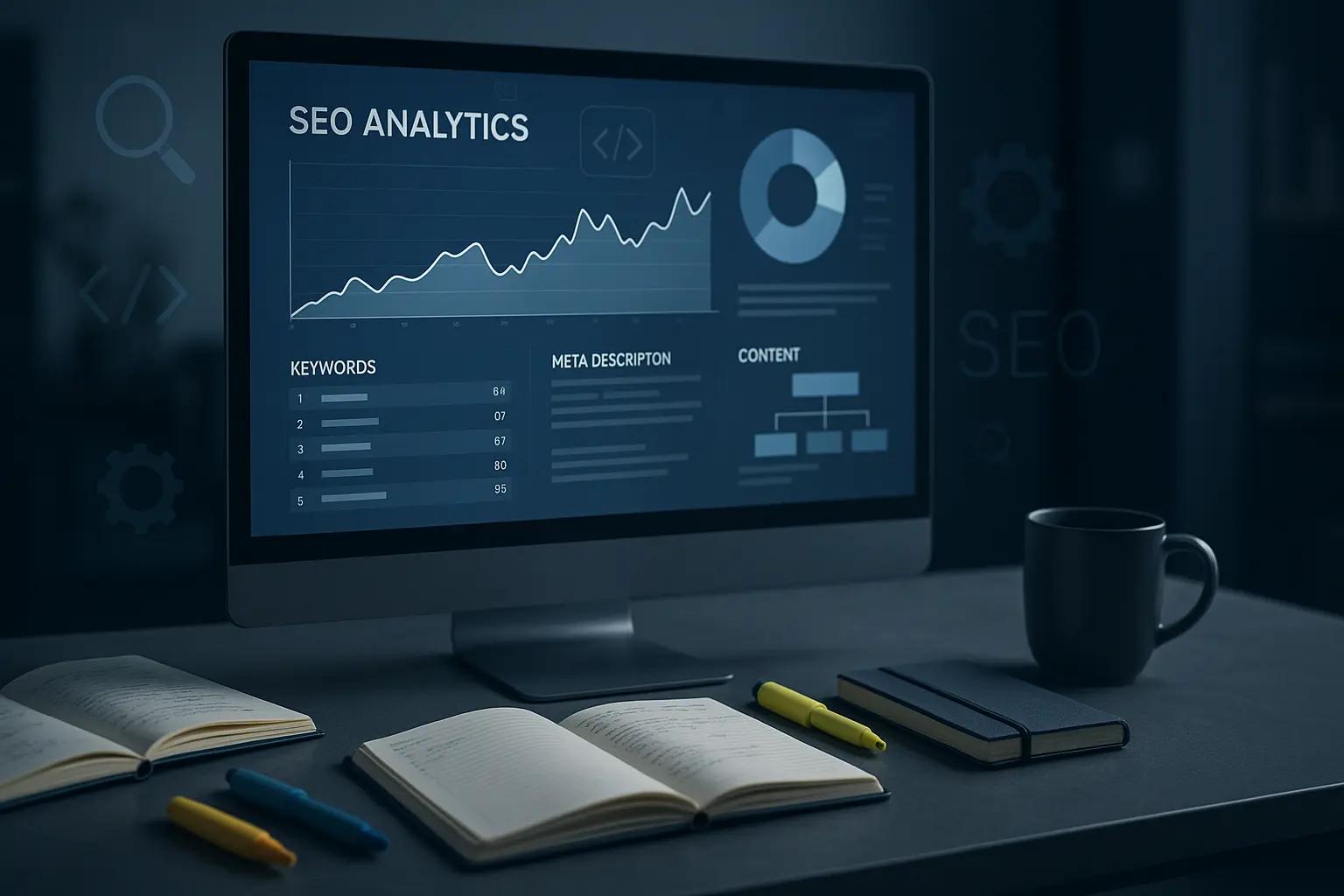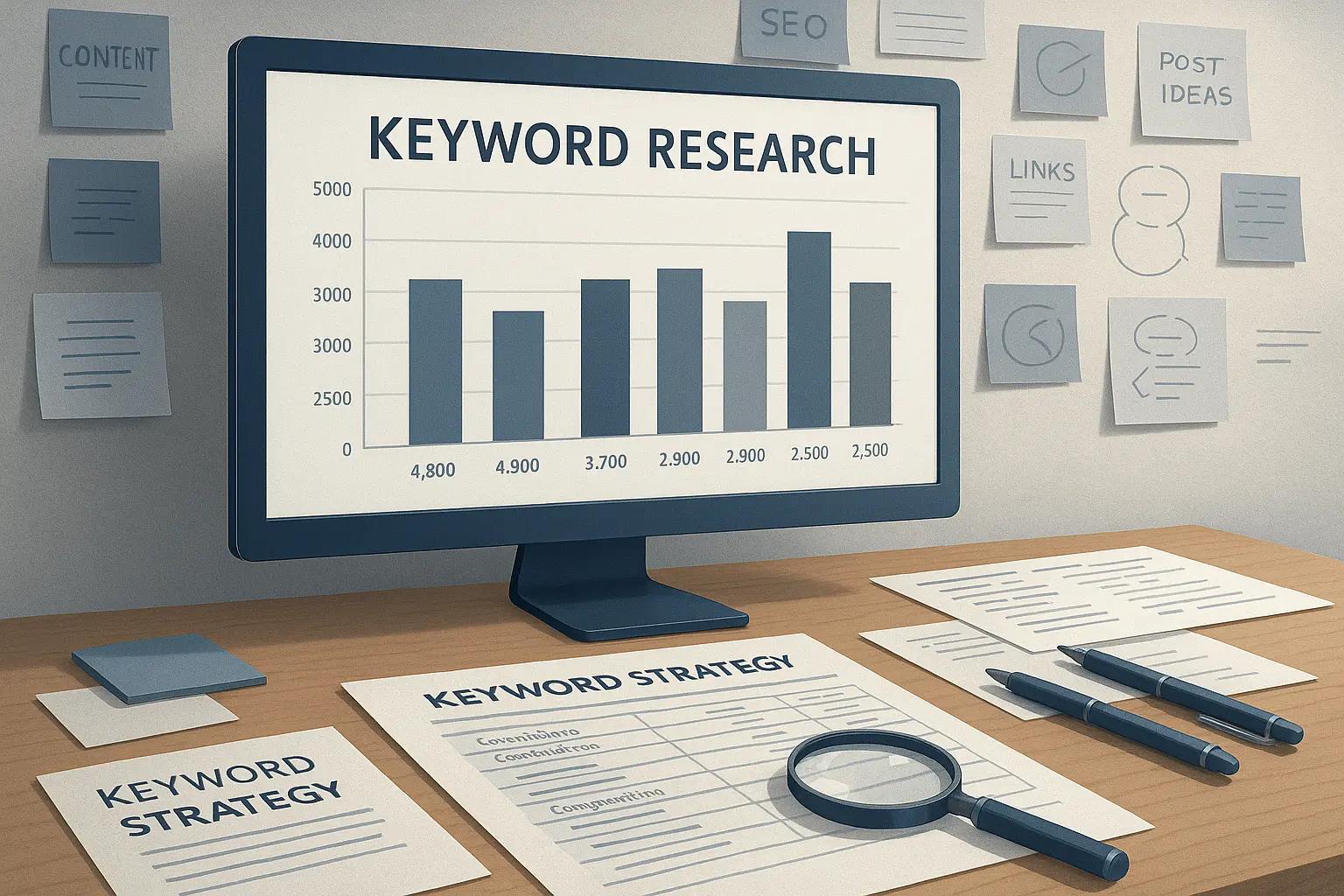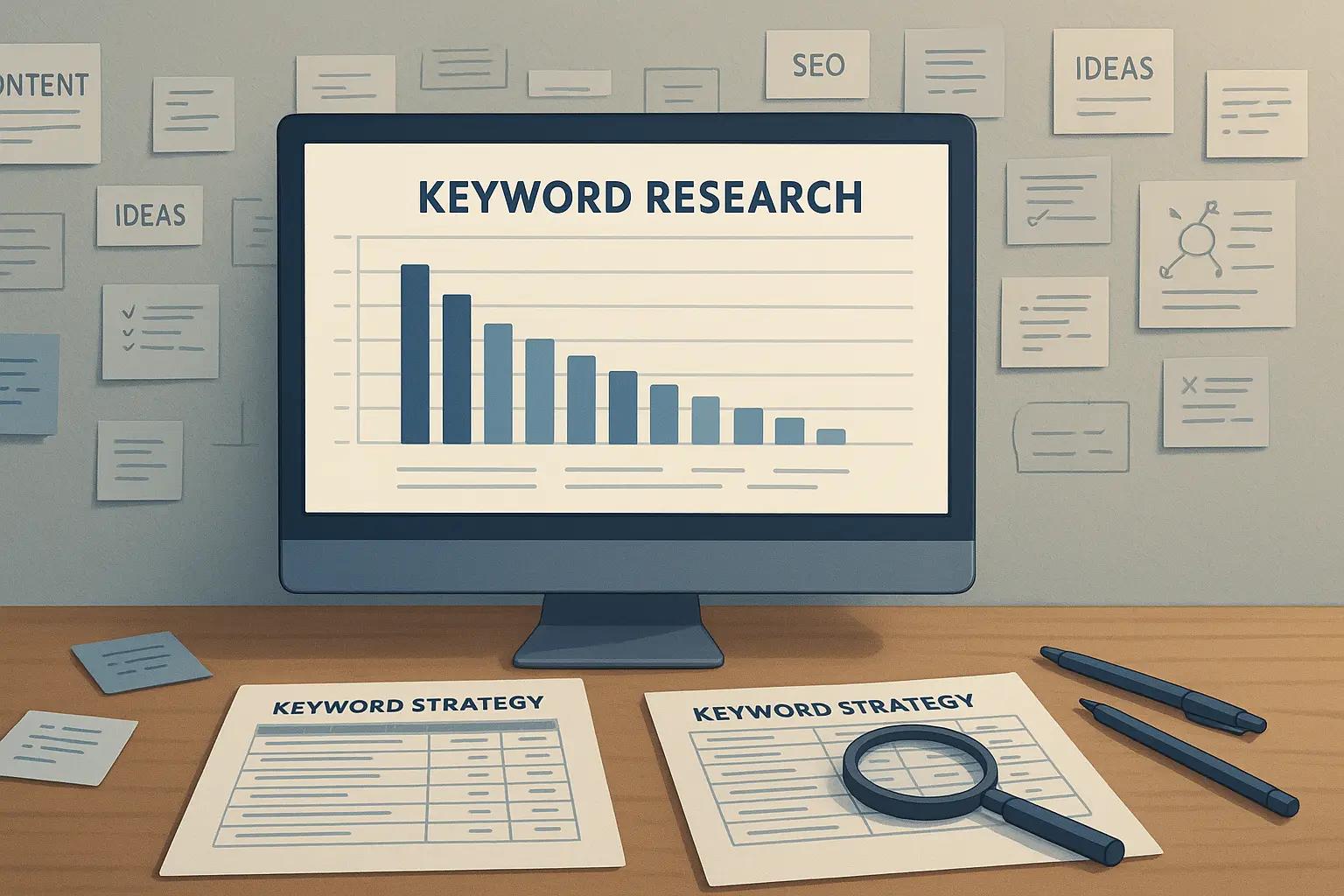
Digital marketing experts know how key on-page SEO is for a website's success. It's all about making your content better to rank higher in search engines and draw in more visitors. To do well in on-page SEO, you need to understand how search engines work and what users want. Websites that focus on making their content better can get more people to visit and stay longer.
Search engines look at many things when deciding how to rank web pages. By learning on-page SEO, digital marketers can make content that both search engines and people will love.
Key Takeaways
- On-page SEO focuses on optimizing individual web page elements
- Content quality directly impacts search engine rankings
- Strategic keyword placement improves content visibility
- User experience plays a crucial role in SEO performance
Regular content updates maintain search engine relevance
Understanding the Fundamentals of On-Page SEO
Getting good at on-page SEO is key to doing well online. Websites that get it right can climb the search rankings and be seen more.
On-page SEO is about making your web pages better for search engines. It's about using the right tech and content to boost your site's search ranking.
What Makes On-Page SEO Different from Off-Page SEO
On-page SEO is all about what you can control on your site. It includes:
- Content quality
- Keyword research
- HTML source code optimization
- Meta descriptions
- Page loading speed
Core Components of On-Page Optimization
Good on-page SEO needs a detailed checklist. It covers many strategies to optimize your site:
| Optimization Area | Key Actions |
|---|---|
| Content | Create high-quality, relevant content with targeted keywords |
| HTML Elements | Optimize title tags, header tags, and meta descriptions |
| Site Structure | Improve internal linking and site navigation |
The Role of Search Engine Crawlers
Search engine crawlers check out websites to figure out what they're about. Good on-page SEO helps these crawlers get your pages right.
"Understanding how search engines work is the first step to effective SEO optimization." - Digital Marketing Expert
By using smart on-page SEO, sites can get more seen and attract more visitors.
Essential Elements of Keyword Research and Implementation
Keyword research is key to making content better and improving on-page SEO. It's important for digital marketers and content creators to know how to find and use the right keywords. These keywords should match what the audience is looking for.

Good keyword research takes a few important steps:
- Analyze search volume and competition
- Understand user search intent
- Identify long-tail and short-tail keywords
- Evaluate keyword relevance to your content
"Keywords are the bridge between user queries and your content's visibility" - SEO Experts
Tools like Google Keyword Planner, SEMrush, and Ahrefs offer great insights. They help creators find search terms that can bring more organic traffic.
When using keywords, make sure they fit naturally. Avoid keyword stuffing as it can hurt your SEO. Place keywords wisely in titles, headers, meta descriptions, and content for better search visibility.
Important things to keep in mind for keyword use include:
- 1. Maintain content readability
- 2. Use keywords contextually
- 3. Prioritize user experience
- 4. Align keywords with content goals
By getting good at keyword research and use, content creators can boost their site's search rankings and connect better with their audience.
Creating High-Quality Content That Ranks
Making great content is key to good search engine optimization. Websites that offer useful, detailed info get rewarded. They help users find solutions to their problems.
Content quality isn't just about how many words you use. It needs careful planning and knowing what your audience wants.
Content Length and Depth Requirements
Good content is usually between 1,500-2,500 words. It should have:
- Comprehensive coverage of the topic
- Clear, concise language
- Actionable insights
- Unique perspective
Writing Engaging Meta Descriptions
Meta descriptions are important for getting people to click on your link. A good meta description should:
- Summarize content in 155-160 characters
- Include primary keywords naturally
- Create a compelling call-to-action
| Meta Description Element | Best Practice |
|---|---|
| Length | 155-160 characters |
| Keyword Placement | Near the beginning |
| Tone | Conversational and direct |
Optimizing Title Tags for Better CTR
Title tags grab attention. Make titles that meet SEO needs and keep users interested.
"Great title tags are like movie trailers - they spark curiosity and compel users to click."
Good meta tags mix in keywords with emotional hooks. This makes users want to dive into your content
Mastering Header Tags and Content Structure
Effective header tags are key to a well-organized website. They help with search engine optimization and user experience. By using heading tags wisely, you can make your site easier to read and rank higher in search engines.

Understanding header tags is all about a clear hierarchy. They act like an outline for your content:
- H1 tag: Your primary page title (use only once per page)
- H2 tags: Main section headings
- H3 tags: Subsections within H2 content
"Good header tags transform complex content into digestible information" - SEO Experts
Using header tags well helps search engines understand your content. This makes your site more visible and easier for users to navigate.
| Header Tag | Purpose | Best Practices |
|---|---|---|
| H1 | Primary page title | Include main keyword, be descriptive |
| H2 | Major content sections | Break down primary topics |
| H3 | Detailed subsections | Provide specific content details |
Having a good site structure with header tags can really improve your SEO. Aim for a logical, easy-to-use content hierarchy. This will help readers follow your information smoothly.
On-page SEO, Content Optimization, SEO Checklist: A Complete Guide
Understanding on-page SEO is complex but doable with a solid plan and hard work. A good content optimization strategy can boost your site's ranking and make it more engaging for users.
Technical Implementation Steps
Good on-page SEO starts with a strong technical base. Key elements for successful content optimization include:
- Ensure website is mobile-responsive
- Implement schema markup
- Create clean, crawlable URL structures
- Optimize page loading speed
Content Optimization Best Practices
To make content that appeals to both users and search engines, focus on these:
- Conduct thorough keyword research
- Create comprehensive, valuable content
- Use strategic internal linking
- Optimize header tags (H1, H2, H3)
Monthly SEO Maintenance Tasks
| Task | Frequency | Impact |
|---|---|---|
| Keyword Performance Review | Monthly | High |
| Broken Link Check | Monthly | Medium |
| Content Audit | Quarterly | High |
"SEO is not about gaming the system, but about creating quality content that provides real value to users." - Digital Marketing Expert
An SEO checklist makes content optimization easier. By sticking to these steps, your site can develop a strong on-page SEO strategy. This will increase organic traffic and improve visibility in search engines.
Image Optimization and Visual Content Strategy
Visual content is key to making your website better. Images do more than just look good. They help keep visitors interested and can even boost your site's ranking on search engines.
There are a few important steps to optimize images:
- Compress image files to make pages load faster
- Use alt text that includes your keywords
- Choose the right file formats like JPEG, PNG, or WebP
- Make sure images work well on all devices
Search engines love websites with great, relevant images. Optimized images can really help your site get noticed and keep visitors coming back.
"A picture is worth a thousand words, especially in SEO" - Digital Marketing Experts
Here are some things to think about when optimizing images:
- Make images smaller without losing quality
- Use original images whenever you can
- Give your images descriptive file names
- Use structured data for better image SEO
By following these tips, you can make your website better for both users and search engines. This could even help you rank higher in search results.
Internal Linking and Site Architecture
Creating a strong internal linking strategy is key for a better website structure and user experience. By linking your pages smartly, you help visitors navigate and search engines understand your site's layout.
Good internal linking is more than just adding links. It needs a thoughtful plan to improve navigation and add value for your audience
Building a Strategic Internal Link Structure
A good internal linking plan involves several important steps:
- Create a clear content hierarchy
- Link to pages that are relevant and related
- Use anchor text that is descriptive and natural
- Spread link equity to key pages
Optimizing Navigation for User Experience
Your site's navigation should be easy to use and help users find what they need fast. Think about using:
- Clear menu structures
- Breadcrumb navigation
- Contextual inline links
- Related content recommendations
Anchor Text Best Practices
Choosing the right anchor text is crucial for your internal linking. Use descriptive, keyword-rich phrases that tell users about the linked page.
"Good internal linking is like creating a roadmap for both users and search engines" - SEO Experts
By using these internal linking methods, you'll make your website more connected and user-friendly. This supports better SEO and a better user experience.
Mobile Optimization and Page Speed Enhancement
In today's digital world, making your website mobile-friendly is key. Search engines love websites that work well on phones. This means fast loading times and a good user experience are crucial for being seen online.
Websites need to follow Google's mobile-first indexing. This means your mobile site is the main one for ranking and indexing. To succeed, focus on these important strategies:
- Implement responsive design that adapts to different screen sizes
- Minimize server response times
- Compress images and leverage browser caching
- Reduce unnecessary code and scripts
"Speed is not just a feature, it's the foundation of modern web experiences." - Web Performance Expert
Page speed affects how users feel about your site and how search engines rank it. Sites that load quickly, in 2-3 seconds, keep visitors longer and get more engagement.
| Performance Metric | Ideal Target | Impact on SEO |
|---|---|---|
| Page Load Time | Under 3 seconds | High positive correlation |
| Mobile Responsiveness | 100% adaptive design | Critical ranking factor |
| Mobile Page Speed | Less than 2.5 seconds | Significant ranking boost |
By improving mobile responsiveness and page speed, websites can boost their search engine rankings and user engagement.
Conclusion
Mastering on-page SEO is a journey that never ends. It needs constant effort and smart planning. The content optimization techniques we've talked about are key to boosting your website's search engine ranking.
Your SEO checklist should grow with the changing digital world. It's not about being perfect right away. It's about making small steps that add up over time.
Search engines like websites that focus on users, are technically sound, and keep improving. By using the on-page SEO tips from this guide, you'll build a strong online presence.
SEO is both science and art. While tech skills are important, your main goal is to make content that really helps your audience. Keep learning, stay flexible, and try new things. Your hard work in on-page SEO will lead to better rankings, more visitors, and stronger connections with your audience.
The digital world changes quickly, and to stay ahead, you must stay curious and active. See your website as a living, breathing space that needs ongoing care and updates. Your commitment to advanced on-page SEO will help you stand out in a crowded online space.

Custom video production at scale
Aneeverse covers all video needs whether you're telling your brand story, launching a product or running ads. Discover how we can help you scale.
